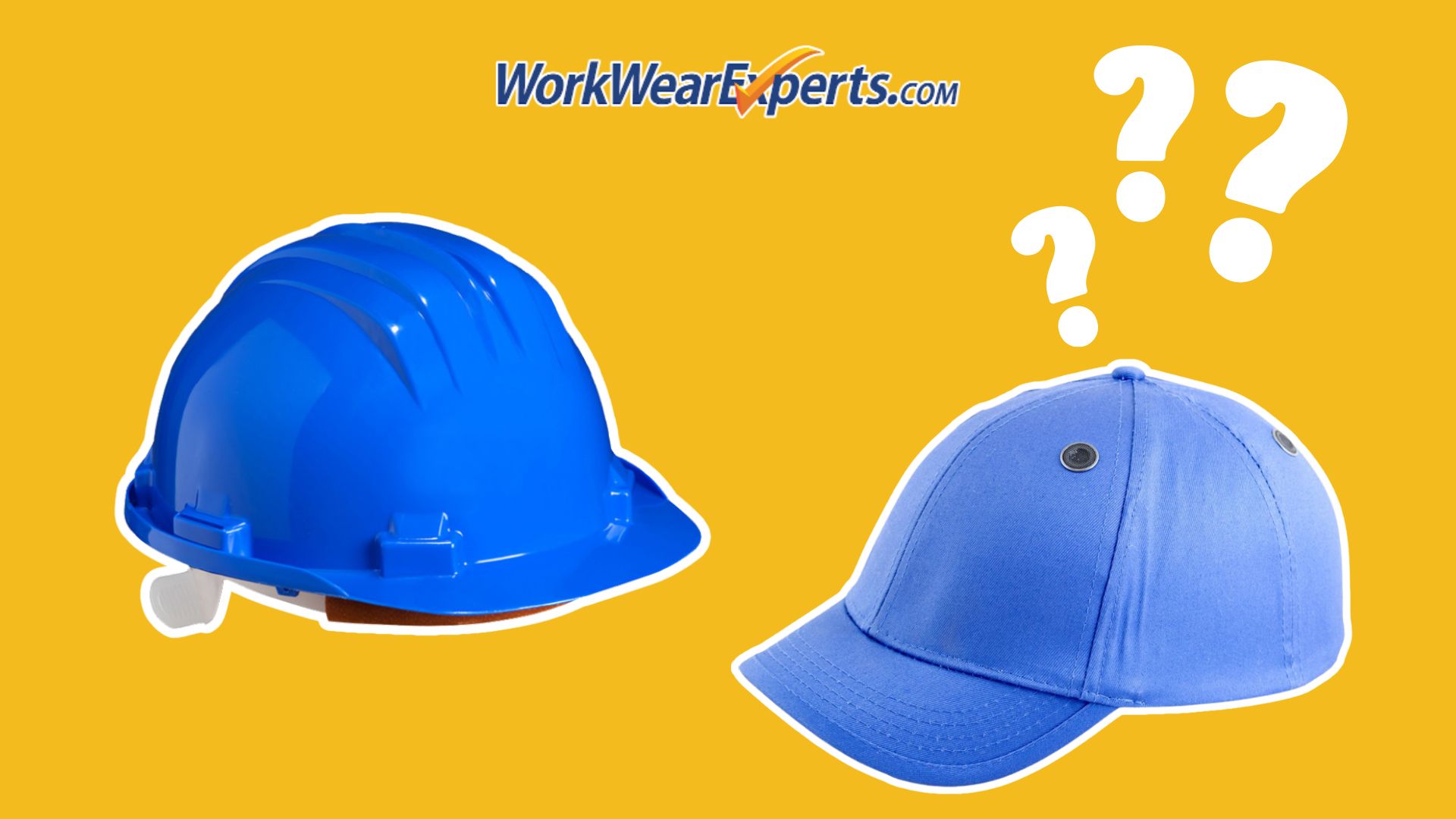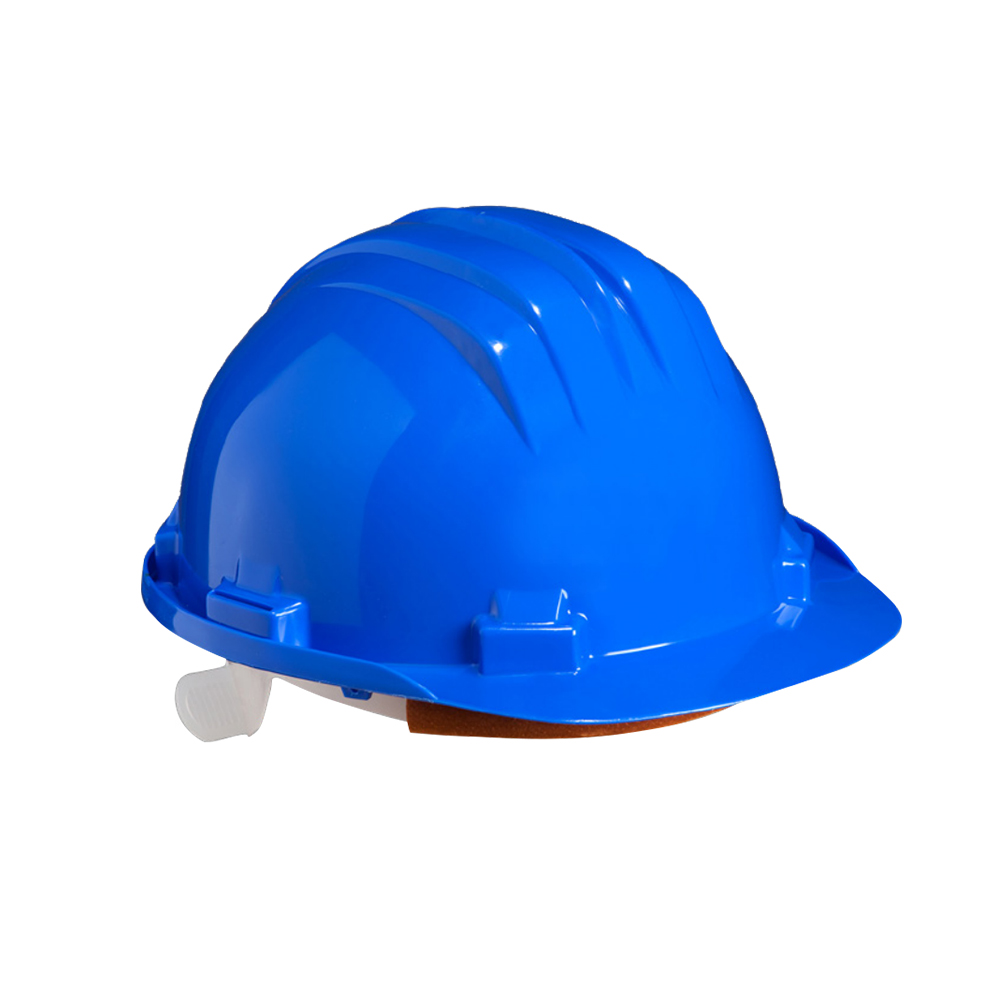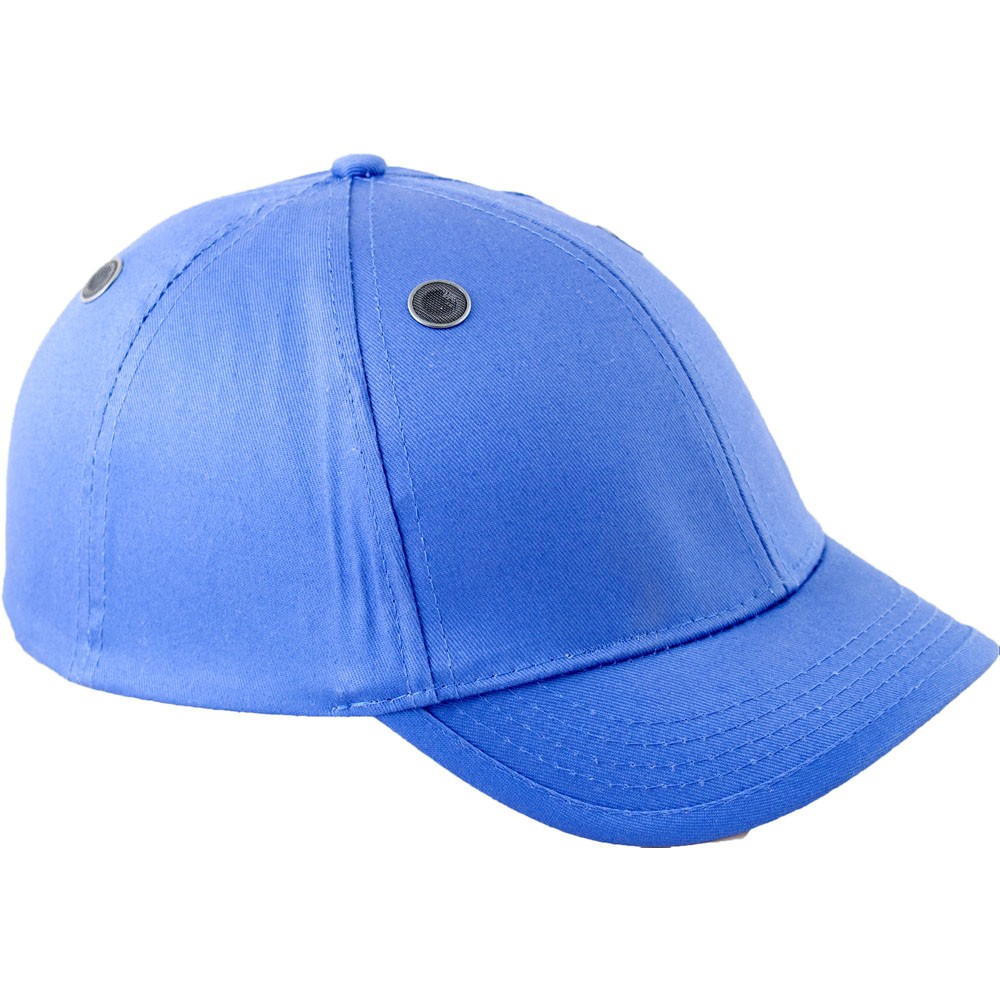Workplace Head Protection: A Guide to Helmets and Bump Caps

Head protection is a critical aspect of workplace safety, particularly in environments where there is a risk of falling objects, impacts, or other hazards that could cause head injuries. Whether you’re on a construction site, in a warehouse, or working in a manufacturing plant, the right head protection can be the difference between a minor incident and a serious injury.
This guide will walk you through the key types of head protection equipment- helmets (commonly known as hard hats) and bump caps. Each serves a distinct purpose and is designed to offer protection in different situations.
Understanding the differences between these types of headgear, as well as their appropriate uses, is essential for ensuring that you and your team are adequately protected on the job.
Understanding the Risks of Head Injuries at Work
Head injuries are among the most serious and potentially life-threatening injuries that can occur in the workplace. Understanding the risks associated with different work environments is crucial for selecting the appropriate head protection and preventing these injuries.
Common Workplace Hazards That Pose Risks to the Head
- Falling Objects: One of the most common hazards in many workplaces, especially on construction sites or in warehouses, is the risk of objects falling from heights. Tools, equipment, materials, or debris can fall unexpectedly, causing severe head injuries if proper protection is not worn.
- Impact from Stationary Objects: Workers can easily bump their heads against low ceilings, beams, or other stationary objects, particularly in environments where visibility is limited or where workers need to move around in confined spaces frequently. This type of injury is often underestimated but can lead to significant harm.
- Slips, Trips, and Falls: Even in relatively safe environments, slips, trips, and falls can result in workers hitting their heads against hard surfaces. This risk is present in virtually all workplaces, making head protection a necessary precaution in many scenarios.
- Exposure to Electrical Hazards: In certain industries, such as construction or utilities, there is a risk of coming into contact with electrical hazards. Hard hats designed with electrical insulation can protect against such dangers, preventing electrical shocks or burns.
The Impact of Head Injuries and the Role of Protective Equipment
Head injuries can have devastating consequences, ranging from minor concussions to severe traumatic brain injuries (TBIs). Such injuries can lead to long-term health issues, permanent disability, or even fatalities. The impact on the individual, their family, and the workplace can be profound, with potential legal and financial repercussions for employers as well.
The role of head protective equipment in preventing these injuries cannot be overstated. Helmets (hard hats) and bump caps are designed to absorb impact, distribute force, and protect the skull from direct hits. While no piece of equipment can eliminate all risks, wearing the appropriate head protection significantly reduces the likelihood of serious injury.
By understanding the specific risks in your work environment and using the correct headgear, you can help ensure that workers remain safe and injuries are minimised.
Types of Head Protection Equipment
When it comes to head protection in the workplace, choosing the right type of equipment is crucial. The two primary options are helmets (hard hats) and bump caps. Each serves a different purpose and offers varying levels of protection, depending on the hazards present in the work environment.
Helmets (Hard Hats)
Helmets, commonly referred to as hard hats, are the most widely used form of head protection in high-risk work environments. They are designed to protect against a variety of serious hazards, such as falling objects, impacts, and electrical shocks.
- Types of Helmets:
- Type I Helmets: These are designed to protect the top of the head from impacts. They are commonly used in construction, manufacturing, and other industries where falling objects pose a significant risk.
- Type II Helmets: These offer additional protection to the sides, front, and back of the head, making them suitable for environments where lateral impacts are a concern, such as in certain industrial settings.
- Key Features and Benefits of Helmets:
- Impact Resistance: Helmets are constructed from strong, durable materials like high-density polyethylene (HDPE) or ABS plastic, which are designed to absorb and dissipate the force of an impact.
- Electrical Protection: Many helmets are designed with non-conductive materials that protect against electrical shocks, making them essential in industries where electrical hazards are present.
- Accessory Compatibility: Helmets can be fitted with various accessories, such as face shields, ear protectors, and chin straps, enhancing their versatility and protection.
- When and Where to Use Helmets:
- Construction Sites: Where the risk of falling objects and impacts is high.
- Industrial Settings: Where workers are exposed to machinery, tools, and other hazards that could cause head injuries.
- Electrical Work: When there’s a risk of contact with electrical wires or circuits.
| Safety Helmet with Chinstrap |
 |
Bump Caps
Bump caps are a lighter, more comfortable alternative to helmets, designed for environments where the risk of serious head injury is lower but still present. They are primarily used to protect against minor bumps and scrapes rather than high-impact forces.
- What Are Bump Caps?
- Bump caps look similar to regular baseball caps but have a hard insert or shell inside that provides basic protection. They are not designed to withstand the heavy impacts that helmets can, but they do offer protection against minor head injuries.
- Differences Between Bump Caps and Helmets:
- Protection Level: Bump caps are intended for low-risk environments where the main hazards are head bumps against stationary objects rather than falling objects or heavy impacts.
- Comfort: Bump caps are generally lighter and more comfortable than helmets, making them ideal for tasks where workers need head protection but not the full coverage of a helmet.
- Design: Bump caps often come in more stylish designs, which can encourage compliance in environments where appearance is a consideration.
- Ideal Scenarios for Using Bump Caps:
- Warehouses: Where workers may bump their heads on shelving or other low-hanging structures.
- Maintenance and Inspection Work: In areas where the risk of serious head injury is low but where head protection is still necessary.
- Manufacturing Plants: Particularly in roles where workers are frequently moving around confined spaces or working near overhead machinery.
| Baseball Bump Cap |
 |
By understanding the different types of head protection available—helmets for high-risk environments and bump caps for lower-risk tasks—you can ensure that you select the most appropriate equipment for your specific needs. This not only enhances safety but also improves comfort and compliance among workers.
Choosing the Right Head Protection for Your Job
Selecting the appropriate head protection equipment involves more than just understanding the differences between helmets and bump caps. It requires a careful assessment of your specific work environment, the hazards present, and the needs of the workers who will be using the equipment. Here’s how to make an informed decision:
Assessing Workplace Hazards
- Identify Potential Risks: Begin by conducting a thorough risk assessment of your work environment. Look for potential hazards such as falling objects, low ceilings, exposed beams, or electrical hazards. The nature and severity of these risks will determine whether a helmet or a bump cap is more suitable.
- Consider the Frequency and Type of Exposure: Determine how often workers will be exposed to these hazards and the type of tasks they will be performing. For instance, if workers are frequently handling heavy materials at height, a helmet with high impact resistance is necessary. Conversely, if the primary concern is occasional bumps against low-hanging objects, a bump cap may suffice.
Compliance with Safety Standards
In the UK and the Republic of Ireland, compliance with safety standards is crucial for ensuring that the head protection equipment you choose is effective and legally acceptable.
- EN 397 (Industrial Safety Helmets): This is the standard that helmets (hard hats) must meet to be used in most industrial environments. It covers the helmet’s ability to absorb impact, resist penetration, and provide electrical insulation (when applicable). Ensure that any helmet you select meets this standard to guarantee it offers adequate protection.
- EN 812 (Industrial Bump Caps): Bump caps must meet this standard, which sets out the requirements for protection against minor head injuries. EN 812 ensures that bump caps provide sufficient protection from knocks and scrapes, but they are not intended for protection against falling objects or heavy impacts.
Comfort and Fit
- Importance of Proper Fit: A helmet or bump cap is only effective if it fits properly. A poorly fitting helmet can shift during use, reducing its protective capability, while an ill-fitting bump cap may not adequately cover the areas at risk. Look for adjustable headbands, chin straps, and harness systems that allow for a secure and comfortable fit.
- Weight and Balance: The weight of the head protection equipment can affect comfort, especially during long shifts. Choose helmets that are lightweight yet durable, and ensure that the weight is evenly distributed to avoid neck strain. Bump caps, being lighter, are generally more comfortable for extended wear, especially in lower-risk environments.
- Ventilation: In hot or physically demanding work environments, ventilation is a key factor in comfort. Many helmets and bump caps come with built-in ventilation systems that allow air to circulate, helping to reduce heat build-up and prevent discomfort.
Additional Features to Consider
- Accessory Compatibility: Consider whether you need additional features, such as attachment points for face shields, ear protection, or communication devices. Helmets with built-in accessory slots can be highly versatile, allowing you to customise protection to your specific needs.
- Reflective Elements: For work in low-light conditions, helmets and bump caps with reflective strips or bright colours can enhance visibility, improving safety for workers in environments where visibility is a concern.
- Adjustability: Look for equipment that offers a good range of adjustability, not just for size, but also for the height of the headband, the position of the chin strap, and the angle of the helmet on the head. This ensures that each worker can achieve a comfortable and secure fit.
By carefully evaluating the specific hazards in your workplace, ensuring compliance with relevant safety standards, and considering the comfort and fit of the equipment, you can choose the most appropriate head protection for your job.
This thoughtful selection process not only enhances safety but also promotes compliance and comfort, ensuring that workers wear their protective gear consistently and correctly.
Proper Use and Maintenance of Head Protection Equipment
Once you’ve selected the appropriate head protection, ensuring its proper use and maintenance is essential to keep it effective in protecting against workplace hazards. Here’s how to make sure your helmets and bump caps remain in top condition and provide the necessary protection.
Wearing Your Helmet or Bump Cap Correctly
- Ensure a Secure Fit: A helmet or bump cap must fit securely on the head to offer maximum protection. Adjust the headband, chin strap, and any other fittings to ensure the equipment stays in place during use. The helmet should sit level on the head with the brim facing forward and not tilt backward or forward.
- Positioning: The helmet’s suspension system should create a gap between the shell and the wearer’s head, allowing for impact absorption. The bump cap, on the other hand, should cover the crown and forehead, fitting snugly but comfortably.
- Consistent Use: Helmets and bump caps should be worn at all times when in areas where head injuries are possible. Workers should be trained to understand the importance of continuous use, even during short tasks, to prevent accidents.
Regular Inspection and Replacement
- Daily Inspections: Before each use, inspect the helmet or bump cap for any signs of damage. Look for cracks, dents, or other deformities in the shell, as well as wear or fraying in the suspension system or chin strap. Any signs of damage may compromise the equipment’s protective abilities, and the gear should be replaced immediately.
- Scheduled Inspections: In addition to daily checks, conduct regular, more thorough inspections at scheduled intervals. This should include a detailed examination of all components, including the shell, suspension system, and any accessories. Keeping a log of these inspections can help track the condition of the equipment and ensure timely replacements.
- Replacement Guidelines: Helmets and bump caps have a limited lifespan, even if they haven’t been visibly damaged. As a general rule, helmets should be replaced every 2 to 5 years, depending on the manufacturer’s guidelines and the conditions in which they are used. Bump caps may also need replacing more frequently, particularly if they are exposed to harsh conditions.
Cleaning and Storage
- Proper Cleaning: Regularly clean helmets and bump caps according to the manufacturer’s instructions. Use mild soap and water to remove dirt, grime, and sweat. Avoid using harsh chemicals or solvents, as these can degrade the materials, reducing the equipment’s effectiveness.
- Drying: After cleaning, make sure the equipment is thoroughly dried before storage. Excess moisture can cause mould or mildew to develop, which can deteriorate the material over time.
- Appropriate Storage: Store helmets and bump caps in a cool, dry place, away from direct sunlight and extreme temperatures. Avoid hanging helmets from hooks by their suspension systems, as this can cause them to stretch out of shape. Instead, store them on a flat surface or in a dedicated storage area where they won’t be exposed to dust, chemicals, or physical damage.
- Protect from UV Exposure: Prolonged exposure to sunlight can weaken the materials used in helmets and bump caps. When not in use, store the head protection away from direct sunlight to prevent UV degradation, which can make the equipment brittle and less effective.
Training and Awareness
- Worker Training: Ensure that all workers who are required to wear head protection receive proper training on how to fit, wear, and maintain their helmets or bump caps. This training should be part of the initial onboarding process and reinforced periodically.
- Awareness Programs: Promote a culture of safety by regularly reminding workers about the importance of wearing and maintaining their head protection. Safety meetings, signage, and regular check-ins can help ensure that head protection is being used correctly and consistently.
By adhering to these best practices for use and maintenance, you can extend the lifespan of your head protection equipment and ensure that it continues to provide effective protection. Regular inspections, proper storage, and consistent training are key to maintaining the integrity of helmets and bump caps, keeping workers safe from potential head injuries on the job.
Conclusion
Head protection is a vital component of workplace safety, especially in environments where the risk of injury from falling objects, impacts, or other hazards is high. Whether you’re using a helmet for heavy-duty protection or a bump cap for lighter tasks, choosing the right equipment, using it correctly, and maintaining it properly are crucial steps in ensuring the safety of you and your team.
By taking these measures, you not only comply with safety standards but also create a safer, more productive work environment.
Ready to protect your team? Explore our wide range of helmets and bump caps at WorkwearExperts.com and ensure your workplace is equipped with the best head protection available.
Your email address cannot be published. Required fields are marked*
